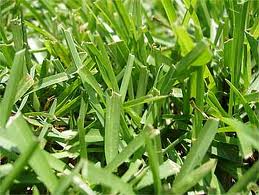Turfgrass and Ornamental Plant Evapotranspiration
and Crop Coefficient Literature Review:
Turfgrass Species in Florida
Centipedegrass (Eremochloa ophiuroides (Munro) Hack)

.jpg) Centipedegrass is is a warm-season turfgrass that is adapted to be used in low maintenance situation, like low annual rates of nitrogen (Trenholm and Unruh, 2006). It has a slow growth pattern, so it is not very competitive against weeds. It is well adapted to sandy, acidic soils and tolerates low fertility, requiring little maintenance, compared to other turfgrasses.
Centipedegrass is is a warm-season turfgrass that is adapted to be used in low maintenance situation, like low annual rates of nitrogen (Trenholm and Unruh, 2006). It has a slow growth pattern, so it is not very competitive against weeds. It is well adapted to sandy, acidic soils and tolerates low fertility, requiring little maintenance, compared to other turfgrasses.
This grass is moderately shade-tolerant and requires infrequent mowing, and will survive mild cold temperatures. Its main use is for athletic fields and golf courses in Florida (Haydu et al., 2008).
Disadvantages
Centipedegrass is highly susceptible to damage from nematodes. It exhibits iron chlorosis if soil pH is high and produces a heavy thatch if over fertilized. It does not tolerate traffic, compaction, high salinity, drought, or heavy shade.


